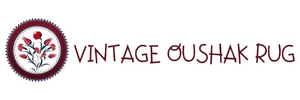Rarity and Uniqueness
Rare and unique attributes contribute significantly to the value of antique rugs. These attributes can include exceptional sizes, rare color combinations, distinctive motifs, or historical importance. The scarcity of a particular design or style in the market can drive collectors to pay a premium.
These types of rugs are handled at the level of collection rugs.
Market Demand
The demand for antique rugs in the market, influenced by trends, collector preferences, and cultural influences, can impact their prices. High demand for specific styles or regions can drive prices up, while shifting trends might affect the market value over time.
Provenance and Historical Significance
The history and provenance of an antique rug can add to its allure and value. Rugs with documented ownership by notable collectors, historical figures, or associations with important events can command higher prices due to their unique stories.
For example, the carpet of a great name (the sultan, the king) who lived in the past is more valuable.
Documents and Certificates
Documents and certificates play a crucial role in establishing the authenticity and provenance of an antique rug. These can include certificates of authenticity issued by reputable rug experts or appraisal organizations. Provenance documents that trace the ownership history of the rug back to its creation can also significantly enhance its value.
Buyers often seek rugs with well-documented histories and ertifications, as
they provide confidence in the rug's origins and quality.
A Wonderful Journey Into the World of Antique Rugs
The world of antique rugs is a realm where art, history, culture, craftsmanship, and documentation converge. The determination of their prices is a nuanced process that takes into account various factors, each contributing to the rug's overall value. As you delve into the world of collecting or admiring these remarkable textiles, remember that the journey of understanding antique rug prices is as intricate and captivating as the rugs themselves. Whether you're an avid collector or simply a curious enthusiast, exploring the stories woven into each antique rug unveils a tapestry of human creativity and ingenuity, backed by documents that authenticate their significance.






































